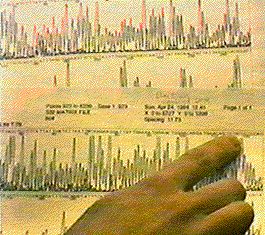The reconstruction of phylogeny - How is molecular evidence used?

There are three other differences between molecular and morphological evidence
1. Molecular sequences provide a much larger amount of information. The enzyme cytochrome c has 104 amino acids, which can be treated as 104 pieces of phylogenetic evidence. It is usual for a morphological study to be based on twenty or so characters.
2. On the molecular level, the recognition of independent units of evidence is straightforward while with morphological evidence, two apparently separate organs may really be a single evolutionary unit. For nucleotides, the mutations down the DNA molecule are independent; each site can evolve irrespective of each other site.
3. Evolution at different amino acid and nucleotide sites is easily comparable: one change at one site is equivalent to one change at another. But how can we say what amount of evolution in a knee bone is equivalent to any given change in a skull bone?
These properties of DNA and protein sequence data have encouraged the development of statistical techniques to infer phylogenies. While the same techniques can be applied to morphological evidence, it is always tempting to resolve any conflicts by deeper character analysis.
In this image the DNA sequences of two species of Lycaenid butterfly are being compared in order to infer phylogeny.
| Next |



